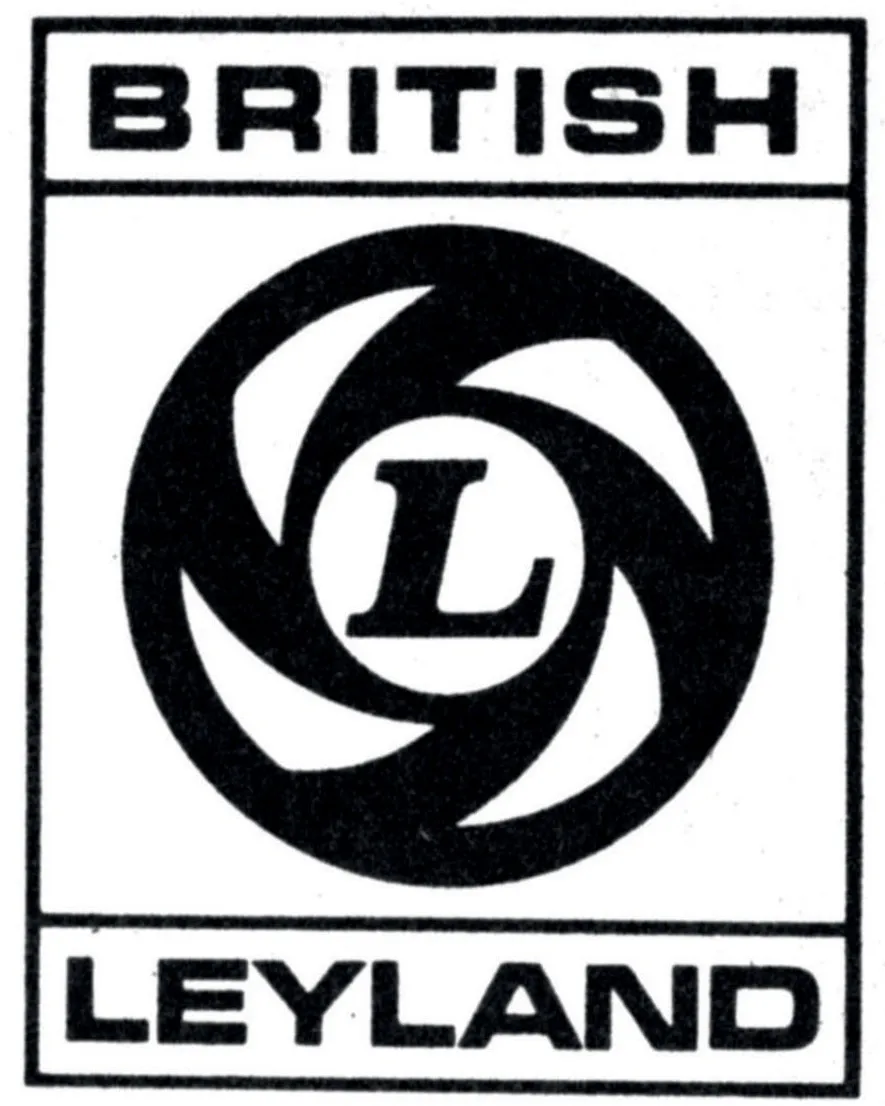![]()
1 AN OVERVIEW OF BRITISH LEYLAND
THE STORY OF BRITISH LEYLAND is an enormously complicated one, and the purpose of this section is simply to provide a framework to act as background to the story of the cars it produced. Indeed, it is sometimes difficult to determine exactly when British Leyland began and when it ended; the dates chosen for this book are 1968, when the British Leyland Motor Corporation was formed, and 1986, when what was left of that grouping was formally renamed as the Rover Group.
One other point needs to be made at the start. British Leyland was a vast organization, with manufacturing interests in many areas beyond cars and light commercial vehicles. This book makes no attempt to deal with these other interests: it is purely about those cars and the light commercials that were directly derived from them.
The British Leyland Motor Corporation, 1968
BLMC formally came into being on 17 January 1968, and was the result of a merger between British Motor Holdings (BMH) and the Leyland Motor Corporation. BMH was then the largest car manufacturer in Britain, nearly twice the size of the Leyland group. It had been formed as BMC (British Motor Corporation) in 1952 by the merger of Austin and the Nuffield Organisation. In 1966 it had become BMH, when Jaguar and its Daimler subsidiary joined the fold. Leyland, meanwhile, was a long-established truck and bus manufacturer that had branched out into car manufacture by taking over Standard-Triumph in 1961.
The 1968 merger was brokered by the Industrial Reorganization Committee, which was then run by Tony Benn. It was an organization established by the Labour Government under Harold Wilson to create a more efficient British industrial base through mergers and reorganization. While the Leyland group was in a strong position, BMH was getting dangerously close to collapse, partly because many of its models were outdated.
Benn was particularly concerned that Britain had no motor industry group big enough and strong enough to counter the major groups in Europe, particularly Volkswagen. He believed that merging the two British groups would produce a group large enough to achieve this, and would also save BMH from collapse. Over the summer of 1967, he encouraged talks between the top management of both sides, and agreement was reached.
There was no doubt that the Leyland group was the stronger partner in the new alliance, and it was a Leyland man who was appointed as Chairman and Managing Director of the new British Leyland Motor Corporation. He was Sir Donald Stokes, who had made his name particularly through export sales, and he was a clear-thinking and often ruthless individual.
British Leyland used this instantly recognizable ‘flying wheel’ logo. The flying wheel was later used on its own without the words.
First Stages
One of the first tasks that fell to Sir Donald Stokes after the merger was to examine the future products portfolio of the companies he now controlled. He was reportedly quite shocked to find that what had once been BMC (principally Austin and Morris) had very little on the stocks. The Austin Maxi was on the way, and work was being done on a planned replacement for the Mini, called 9X. But there were no plans to replace the big-selling medium-sized models, the Morris Minor, the 1100/1300 range, or the larger 1800 saloons.
Architects of British Leyland’s early days: Stokes is on the left, his Financial Director John Barber is in the middle, and on the right is George Turnbull, who was then Managing Director of the Austin-Morris division. ALAMY
Stokes clearly thought that much of the blame for this deficit in the future product programme could be laid at the door of Alec Issigonis, the Technical Director of BMC. So he rapidly sidelined him in a management shake-up, giving him the new job of Special Developments Director. He moved Harry Webster from Triumph to replace him, now with the job title of Technical Director, Small and Medium Cars; and as Triumph’s new Technical Director he appointed Spen King, who had been in charge of Rover’s future model think-tank.
All this happened in and around May 1968, and on 12 June, Stokes addressed a meeting of former BMC distributors at Longbridge, promising them a completely new model policy over the next five years under the direction of Harry Webster. Webster was a very shrewd choice, as he had overseen the engineering of a company that had produced not only sports cars but also ‘executive’ saloons, and had experimented with front-wheel drive for its medium saloons as well.
Stokes also decided to recruit new management talent from outside BLMC in order to inject some fresh thinking into the company. One of his first appointments was John Barber, an experienced former Ford man who became BLMC’s Finance Director and Stokes’ right-hand man. Ford was then regarded as the best training ground in Britain for motor industry managers, and over the next few years a sizeable number of former Ford employees were recruited to BLMC. They certainly did inject some new ideas, but they also aroused a degree of suspicion among the established workforce: they were not members of the ‘tribe’ associated with each of the old companies, and they wanted to do things differently.
The rest of the Stokes management team was almost exclusively drawn from the Leyland side, but it would be wrong to suggest...



